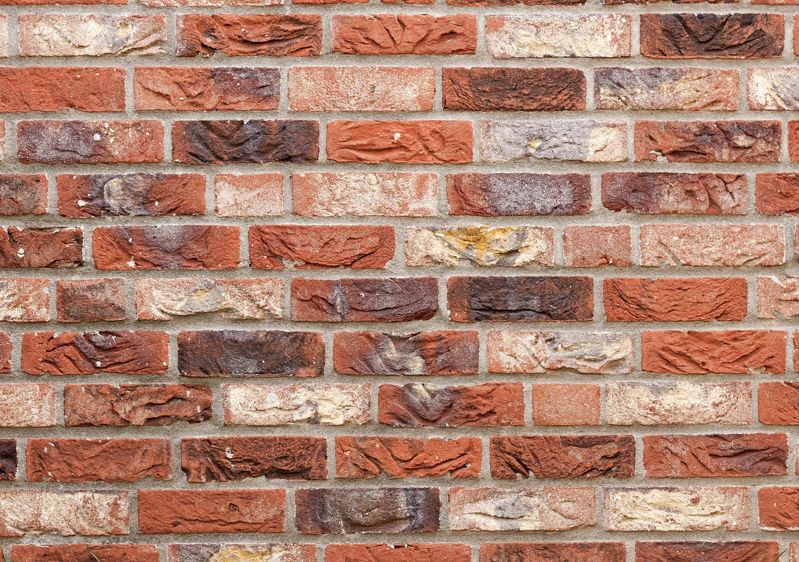Understanding Masonry Element
Table of Contents
What is Brick Reinforcement?
Brick reinforcement refers to the use of additional materials, usually made of metal such as steel, to strengthen and provide stability to brick masonry structures. The reinforcement is typically integrated into the mortar joints between bricks during construction. There are different types of brick reinforcement, but one common form is a mesh or grid made of steel wires.
Here are some key points about brick reinforcement:

- Materials: Steel is often used for brick reinforcement due to its strength and durability. The reinforcement can be in the form of wire mesh, ladder-shaped wire, or other configurations.
- Placement: The reinforcement is embedded within the mortar joints between layers of bricks. This is usually done in a way that the reinforcement is evenly distributed throughout the wall.
- Functions:
- Strength: Brick reinforcement enhances the structural strength of masonry walls. It helps distribute loads more evenly, reducing the risk of cracking and improving overall stability.
- Flexibility: It increases the flexibility of the wall, allowing it to better withstand movement and settlement without significant damage.
- Durability: By minimizing cracking and other forms of damage, brick reinforcement contributes to the long-term durability of masonry structures.
Types of Brick Reinforcement:
Mesh Reinforcement: A mesh of steel wires is laid between courses of bricks.
Ladder-type Reinforcement: Vertical steel wires (ladders) are embedded in the mortar joints.
Flat Brick Reinforcement: Flat strips or bands of steel are placed horizontally or vertically in the mortar.
Applications: Brick reinforcement is commonly used in various masonry structures, including walls, partitions, and facades. It becomes particularly important in regions prone to seismic activity or where additional structural strength is required.
Building Codes: Construction codes and standards may dictate the type and amount of reinforcement required based on factors such as building height, location, and the intended use of the structure.
Overall, brick reinforcement is a practical method to enhance the performance of brick masonry, providing strength, durability, and stability to the structure.
How does brick reinforcement help in masonry design?
Brick reinforcement, also known as brick mesh or brick ties, is a technique used in masonry design to provide additional strength and stability to brick walls and structures. The reinforcement is typically made of steel wire or mesh and is embedded within the mortar joints of the wall during construction.
There are several ways in which brick reinforcement helps in masonry design:
- Increased strength: Brick reinforcement helps to distribute the load and stress of the structure more evenly, which increases the overall strength and stability of the wall. This is especially important in areas that are prone to seismic activity or high winds.
- Improved durability: By providing additional support to the brickwork, brick reinforcement helps to prevent cracking and other forms of damage that can occur over time. This can help to extend the lifespan of the structure.
- Enhanced fire resistance: When used in conjunction with fire-resistant materials, brick reinforcement can help to improve the fire resistance of the wall or structure.
- Increased flexibility: Brick reinforcement can also help to increase the flexibility of the wall or structure, allowing it to better withstand movement caused by settling or expansion and contraction due to temperature changes.
Overall, the use of brick reinforcement is an effective way to enhance the strength and durability of masonry structures, and is an important consideration in the design and construction of brick walls and buildings.
Breakdown of BS EN 1996-1
Here’s a breakdown of the key aspects of BS EN 1996-1-1:
Scope:
- The standard covers the design of both reinforced and unreinforced masonry structures. It provides general rules applicable to the design of structures using masonry as a structural material.
Material Properties:
- The standard outlines the material properties and performance requirements for masonry components, including bricks, blocks, mortar, and grout.
Structural Analysis:
- It provides guidelines for the structural analysis of masonry, taking into account factors such as loads, supports, and the behavior of masonry under different conditions.
Design Principles:
- The standard establishes general design principles for masonry structures, covering aspects such as safety, serviceability, and durability.
Reinforced Masonry:
- Specific provisions are included for the design of reinforced masonry structures. This involves the use of steel reinforcement within the masonry to enhance its strength and ductility.
Unreinforced Masonry:
- Guidelines are provided for the design of unreinforced masonry structures, where the masonry components primarily resist loads without the use of embedded steel reinforcement.
Design Checks:
- The standard includes provisions for structural design checks, ensuring that the masonry structure can safely withstand the applied loads and environmental conditions.
Basis of Design:
- BS EN 1996-1-1 outlines the basis for structural design, including limit states, partial safety factors, and load combinations.
Execution and Workmanship:
- The standard addresses considerations related to the execution of masonry work, emphasizing the importance of quality workmanship to achieve the intended structural performance.
Interaction with Other Eurocodes:
- It is important to note that BS EN 1996-1-1 is part of a series of Eurocodes, and its application may involve coordination with other Eurocodes addressing related aspects of structural design.
